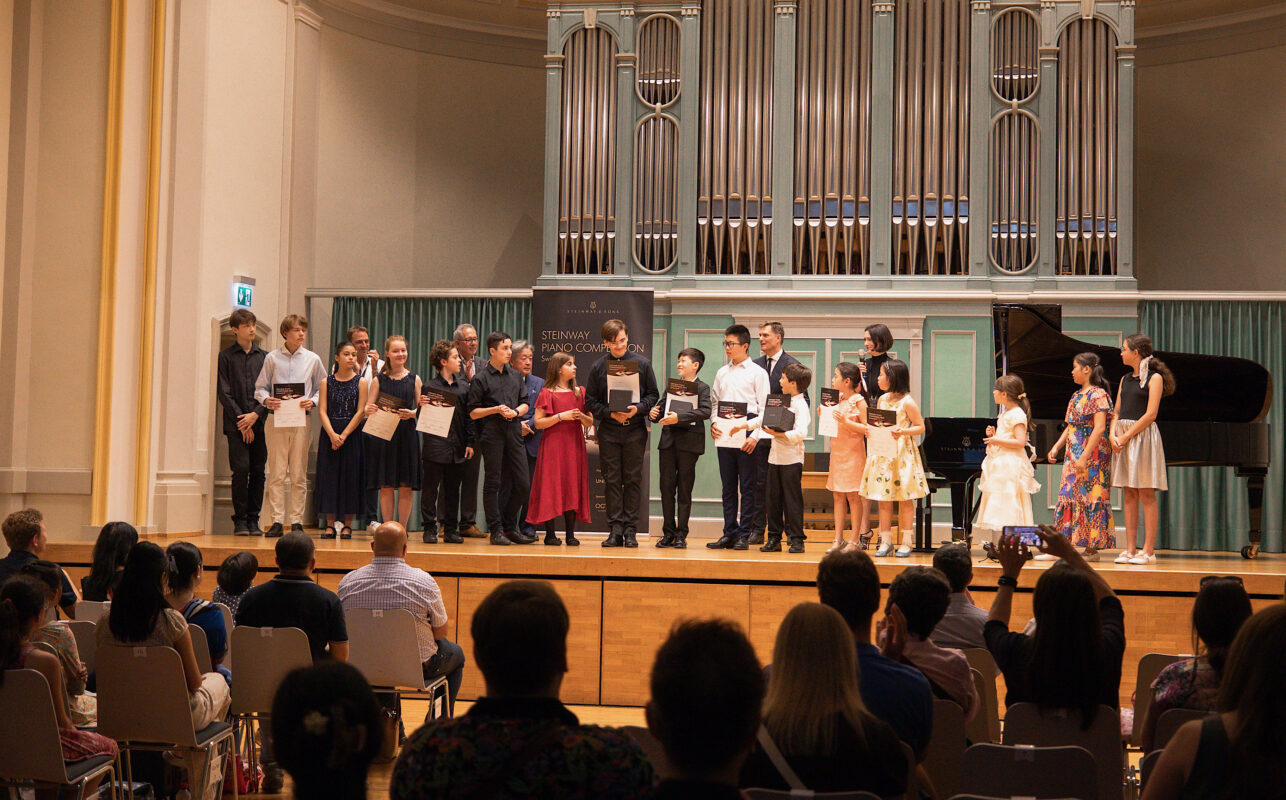The night worker
Margrit Zimmermann, composer, conductor, pianist, teacher, born 1927, died 2020.

Margrit Zimmermann's list of compositions is extensive and covers all musical genres apart from opera. She devoted a great deal of attention to chamber music and chose unusual combinations of instruments and soundscapes. A pianist by training, the piano was close to her throughout her life. Everything was written on it, mainly at night, whether the large orchestral scores, the string quartets or the actual piano compositions. The Erard grand piano in her house in Bern's Schönberg district was her working instrument and place of work, on which she piled up sketches and finished, written compositions. One central work was literally written for the piano: In the Etudes bianchi-neri the black upper keys are set against the white lower keys, as if the keyboard had two manuals.
Margrit Zimmermann described her music as free-atonal and traditional. The latter refers to the notation and the formal structure. Her tonal language moves in the non-tonal, dissonant border area. It is characterized by the horizontal and vertical layering of fourths and sevenths, and consequently also by their inversions, fifths and seconds. The composer used tonal extensions in a playful, improvisational way to create pointed effects and wrote her own signs in the scores with explanations in front of them. A heavy chain rattles along with the piano, forearms have to be rolled over the keys, winds and strings play in quarter tones. She devoted a theoretical work and graphic illustrations to the organization, tuning and use of quarter-tone music.
Margrit Zimmermann's works have found their interpreters, small and large stages, and have won several awards.
Born in Bern in 1927, Margrit Zimmermann trained as a pianist in Bern with the pianist and composer Jeanne Bovet and later in Paris with Alfred Cortot, where she was fortunate enough to attend a composition course with Arthur Honegger for a year. She later trained as a conductor and founded her own orchestra in Berne in 1973. In 1978, she completed eight years of composition studies at the Conservatorio Giuseppe Verdi in Milan with a Diploma di Composizione.
Margrit Zimmermann's catalog raisonné can be viewed at musinfo.chcompositions are available in the library of the Bern University of the Arts. A CD brings together the works Quadriga and Piano Time for piano, Pensieri for tenor, guitar and flute, a string quartet and the Orphic Dances for flute, clarinet, viola, violoncello and piano (available from gerber.iris@gmx.ch). In the book Nachtwerk - Homage to a female composer, published in 2011 by Publisher Zytglogge Oberhofen/BaselIris Gerber Ritter, Margrit Zimmermann's former pupil and interpreter, talks about her life and work.
On February 23 of this year, Margrit Zimmermann passed away after a long illness at the age of ninety-three. Her final resting place will be the Schosshalden cemetery in Bern.








